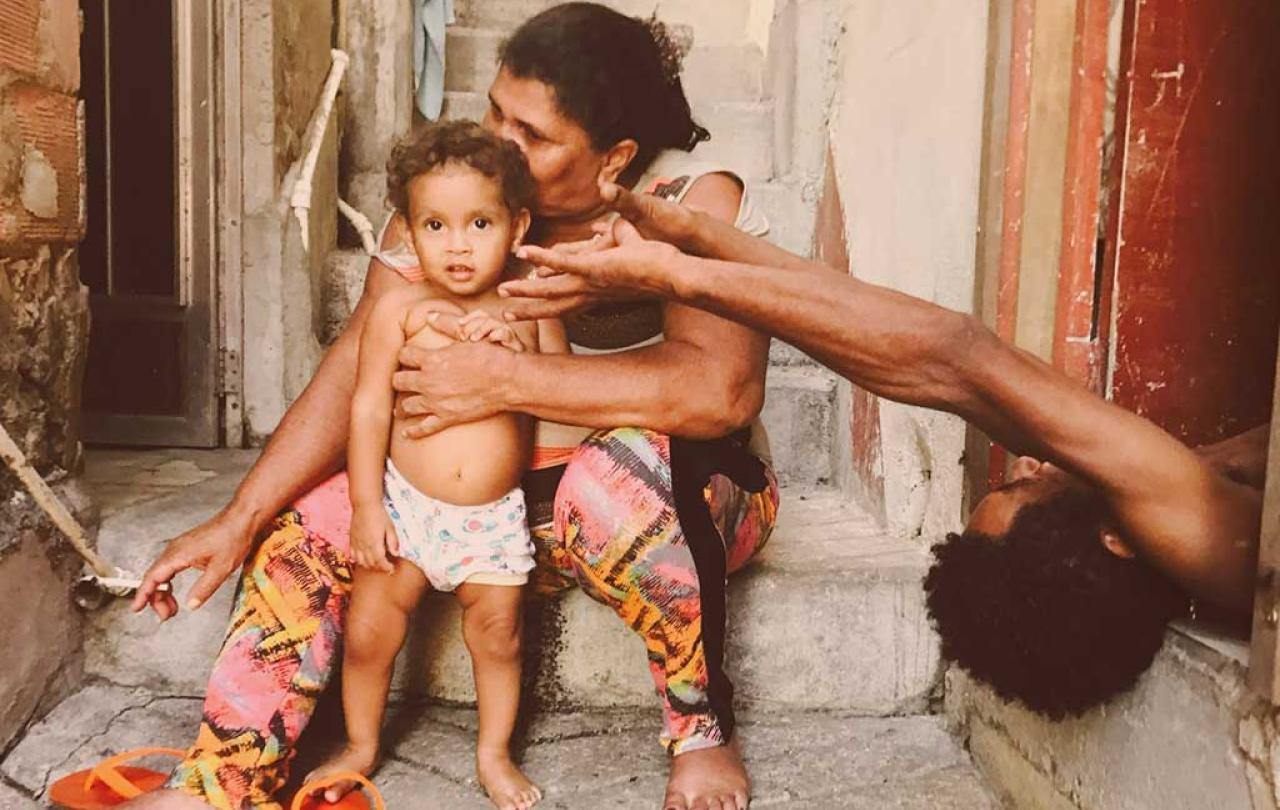
“Mummy, are we homeless?” asked our six-year-old as we pulled away in the taxi. We had just eaten a final meal - a KFC family bucket of fried chicken - sitting on a sarong on the floor of our empty apartment in Rio de Janeiro, our home for almost four years.
The question left me momentarily winded. Homeless. A word that instantly conjured up feelings of anxiety and uncertainty, of sands shifting under our feet. Technically, yes, we were. My husband had just left his job in Brazil, and we had two months with nowhere to live before we relocated back to the UK. With no permanent base anywhere in the world, we were about to use the time to travel in South America as a family. Whilst I did feel somewhat insecure, my husband in contrast found it freeing; the first time in his life that he didn’t carry a set of house keys in his pocket. We had nowhere to live, but we were free to go wherever we wanted. And this is where the analogy of us actually being homeless broke down. We had a freedom of choice in a way that the vast majority of people who experience homelessness do not.
World Homeless Day on the 10th October was marked with the recent release of a landmark UN report on global homelessness. The UN define homelessness as:
“where a person or household lacks habitable space with security of tenure, rights, and ability to enjoy social relations, including safety. [It] is a manifestation of extreme poverty and a failure of multiple systems and human rights.”
According to UN-Habitat, a staggering 1.6 billion people in the world are estimated to be in inadequate housing and over 150 million have no housing at all.
Global homelessness has been rising for the past decade, with temporary homelessness being increasingly caused by conflict and climate-induced displacement. However, according to the UN report, Covid-19 exacerbated the issue, deepening existing inequalities and causing already marginalised people to be even more vulnerable.
In developing countries, the informal economy – self-made microentrepreneurs who sell everything from popcorn to shoe polishing - usually sustains the poor urban majority. But with many informal jobs vanishing during lockdowns, and with few assets and limited social safety nets, many urban dwellers were rapidly plunged further into poverty. Women and children suffering from domestic and gender-based violence had to remain in unsafe environments, with abuse escalating during lockdowns and curfews. Issues that encouraged migration and homelessness.
There are approximately 150 million children living and working on the streets worldwide. Almost impossible to imagine, and so the number sometimes doesn’t compute with our hearts.
The extent of homelessness worldwide is notoriously difficult to quantify accurately, partly due to what is known as hidden homelessness. The hidden and isolated nature of children and adolescents living on the street, for example, makes statistics difficult to gather. A 2023 UNICEF report of street children in Dhaka estimated that the number of children living on the street just in Bangladesh could be in the millions. And according to UN sources there are approximately 150 million children living and working on the streets worldwide. Almost impossible to imagine, and so the number sometimes doesn’t compute with our hearts. The true horror of the isolation of child homelessness only truly hit me a few years ago…
The residents in our block had finally had enough of the noise and called the police. They arrived in the middle of the night with their guns and shot at the children who dispersed.
Living at the top of a high-rise block in the middle of an urban neighbourhood in Rio, we were kept awake for a number of nights in a row. It started as a disturbance – children yelling in the street outside that would continue from the early hours until dawn. But as the days went on, the disturbance at night became more acute. One morning as I stepped out of our apartment in the morning, bleary-eyed and irritated, I was confronted by a small group of sleeping children lying huddled together in a row on the pavement next to a tree. Several pairs of bare filthy feet were sticking out of a blanket they were sharing. I looked down at them as I passed – they varied in age from about eight to twelve years old. The youngest was probably younger than my son at the time. He had knotted black curly hair and a streaked face. The next night we heard gun shots and then an eery silence. Another sleepless night, this time from worrying about the children, and then we discovered that the residents in our block had finally had enough of the noise and called the police. They arrived in the middle of the night with their guns and shot at the children who dispersed. The children never came back.
The government pledge to end rough sleeping in England by the end of 2024 is woefully off track.
Although homelessness is an overwhelmingly larger problem in poor countries, it also affects affluent nations, including the United Kingdom. This year the Kerslake Commission, an expert panel set up to scrutinise how rough sleeping is being addressed across England, pointed out that data on rough sleeping in London last year showed a 16 per cent increase in numbers of people sleeping rough. And that almost half (48 per cent) were sleeping rough for the first time. It concluded that the government pledge to end rough sleeping in England by the end of 2024 is woefully off track. According to Crisis, the homelessness system in England is at breaking point and the Homelessness Monitor 2023 reported that the cost-of-living crisis, rising rents and a lack of affordable housing are making it harder for councils to provide homeless people with effective support.
It is about where you feel valued and understood… where you feel loved… and where you want to come back to.
So, the problem of homelessness really is global. And what is the answer? Yes, governments must act; social safety nets and public policies to help alleviate poverty are critical. But even the richest countries with the most advanced governments have never been able to fully tackle this issue. Homelessness and poverty were rife in Biblical times. As Jesus said in the Gospel of John, “‘You will always have the poor with you”. And Jesus himself understands homelessness in a way many of us don’t; he started life in a stable, born to parents who were sleeping rough. He became a baby on the run to flee King Herod, homeless and seeking asylum in Egypt. When Jesus was older, after he was baptised by John the Baptist, he became homeless again, living life on the the road and in the open. In Luke, he says: “Foxes have dens and birds have nests, but the Son of Man has no place to lay his head.”
He emphasised that his followers leave the trappings of “home” to follow him.
I used to volunteer at a Christian charity, Casa de Maria e Marta, in a favela (slum) community in Rio, known for gang violence and drug trafficking. A larger-than-life Brazilian lady, Edimea, has run the charity for over twenty years. Almost a hundred children come to the charity each day, which provides three meals as well as extra tuition and care for the children. All of those who attend are either living in inadequate housing or are homeless. One day I asked Edimea whether she still sees the children after they leave her charity at age twelve. She laughed and said yes of course, they still come back to eat! And then she said,
“I do an assessment before I take a new child in, to understand what they know, and work out how we can best help them. And I always say to them – we take beautiful children, and so we are taking you, because you are beautiful inside and out. They come back because they don’t forget those words.”
Like Jesus, Edimea shows endless concern and love for those on the margins. She can’t solve all the practical problems she comes across or offer a permanent roof over a head, but she does provide a place where everyone feels a sense of safety and belonging. Perhaps home means more than the UN’s definition. It is about where you feel valued and understood… where you feel loved… and where you want to come back to.





